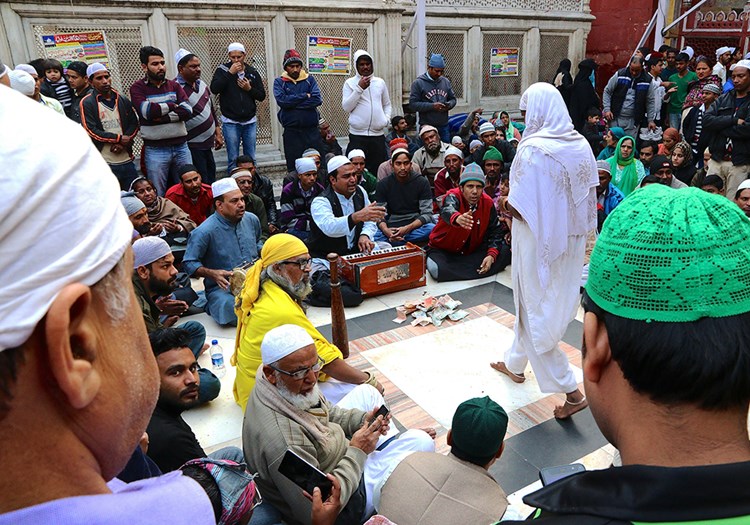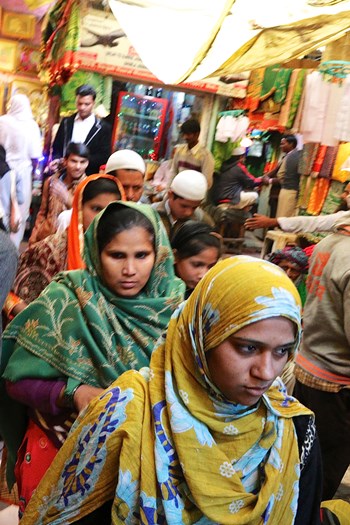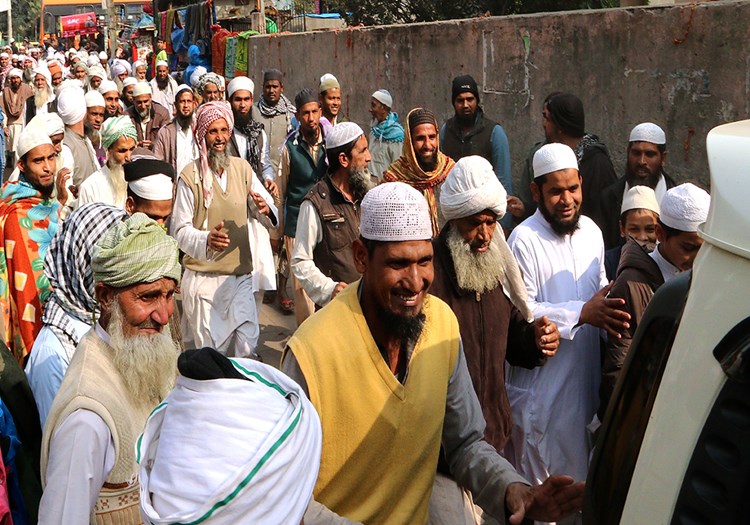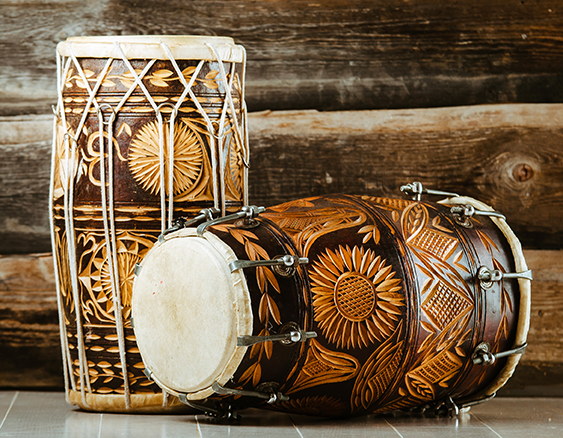NEW DELHI - Bearded men in white caps and other head coverings milled around the entrance to the old Muslim neighbourhood of Nizamuddin Basti, or Nizamuddin Village, in New Delhi.
“An important sheikh is coming,” one of them said when I asked, and soon two large white SUVs, one tightly behind the other, turned off Mathura Road into the narrow street. The crowd parted, then converged behind the vehicles, the men running, laughing and waving their hands in delight. About a block farther on, the vehicles stopped and the excited crowd followed the visitors through the doors of a large mosque.
I kept going. I had arrived at one of Delhi’s most animated neighbourhoods to visit one of the world’s most important Sufi shrines, the Mausoleum of Sufi saint Hazrat Nizamuddin Auliya (1238 – 1325 CE). Sufism is the mystical practice of Islam. It uses music to arouse divine love and even divine ecstasy, and in the Indian subcontinent the Sufi music of choice is qawwali, a type of praise singing characterized by rhythmic intensity and soaring vocals. Famously, the great Pakistani singer Nusrat Fateh Ali Khan brought qawwali to the world stage before his death in 1997.
Traditionally, however, qawwali is performed not in a concert hall but at a Sufi shrine, and nowhere more authentically than at the shrine of Hazrat Nizamuddin Auliya.
I fell in with a line of people I took for pilgrims. We passed stands selling kebabs, biryani rice dishes and a vermicelli desert called “seviyan,” and entered a covered bazaar. The lane narrowed. People were streaming both ways — toward the shrine and away from it. Progress was slow. The shops took on a more devotional character — religious bookshops, calligraphy displays and stalls selling headscarves, incense, attar perfume and roses for scattering on the saint’s grave.


Left: Offerings are made. Right: Women also participate.
Soon I passed racks of footwear. “No shoes,” said a man in charge of one rack. I removed my shoes and socks, set them on one of his shelves, and continued barefoot until the narrow passage opened onto a courtyard of white marble.
From the opposite wall, a man holding a registry book signalled to me. “Please sign,” he said when I approached. I filled out spaces for my name, country of origin, signature and the amount of my donation. The registry suggested 1,000 rupees, ($20) an exorbitant amount, the same price foreigners must pay to enter the Taj Mahal, in Agra. I offered 500 rupees ($10), and thought later even that was too much. I wished I had saved my money for the singers.
“Canada,” said the man reading my entry.
“Two weeks ago, the Canadian high commissioner brought his father here,” he said, speaking good English and flipping through pages looking for the high commissioner’s signature. I was interested because a week earlier I had met him, Nadir Patel, at a conference at Delhi’s Taj Palace Hotel. I could easily picture him bringing his father here, a true cultural adventure, but we couldn’t find his name.
“We have other registries,” the man said, sounding disappointed not to be able to show me.
“What time is the qawwali singing?” I asked.
Most tourism websites say the players perform late Thursday afternoon and early evening. Some sites say Thursday and Friday. Some say Thursday and Saturday. Some say Thursday and Sunday. The shrine’s website says the players perform every day, but Thursdays and Sundays are special. I was there on a Sunday.
“They started at 10 this morning and they take breaks,” the registry man said. “They’ll start again in a few minutes.”
It was four o’clock. I made my way to the courtyard fronting the two mausoleums, the marble smooth and cool under my feet. The smell of incense and roses filled the air. One building contained the tomb of the saint, the other the tomb of his closest disciple, Amir Khusrau, a poet and composer who died six months after his master in 1325. “The father of qawwali,” people call him, his poems and melodies continuing to form the core of the qawwali repertoire.


Left: People rush to ceremony. Right: Type of drum used in ceremony.
Opposite Khusrau’s tomb, three musicians assembled in a row cross-legged on the marble — one with a harmonium, a type of pump organ, one with a dholak drum, which is played flat-handed at either end, and the third designated to sing lead vocals. They began slowly. Pilgrims moved in behind them and to either side, sitting and standing, while leaving the courtyard open in front.
“Photography is prohibited,” said a number of signs on the mausoleum, but pilgrims openly posed in front of each other’s smartphones and snapped selfies.
I tried to be discreet. I sat to one side, close to the players, and before clicking the shutter waited for the music to rise to a crescendo.
For the next two hours, I hung out in the courtyard with the Sufis. People were friendly. One man asked to have his picture taken with me. Every once in a while somebody stepped forward to drop a 10- or 20-rupee note at the feet of the players and I tossed in some money. Perhaps on Thursday nights, under the lights, the crowd is bigger and the music more intense. Perhaps there are more players.
But I was glad to have come on a Sunday afternoon, the only tourist in the crowd, giving myself over to the rhythmic energy and soaring chants of a tradition dating back 700 years.
About the Author
As the Toronto Star’s world-music reporter, John Goddard travelled frequently to Africa to hear singers everywhere from Khartoum to Timbuku. Afterward, he started wandering closer to home. By foot and subway, he reached all of Toronto’s small heritage museums and wrote the book Inside the Museums: Toronto’s Heritage Sites and Their Most Prized Objects. He then rode the intercity GO bus to write the companion volume, Inside Hamilton’s Museums. Both local and foreign destinations continue to draw him. As a longtime Asia Pacific Foundation of Canada Media Fellow, he recently resolved to delve deeper into the delights of Southeast Asia.